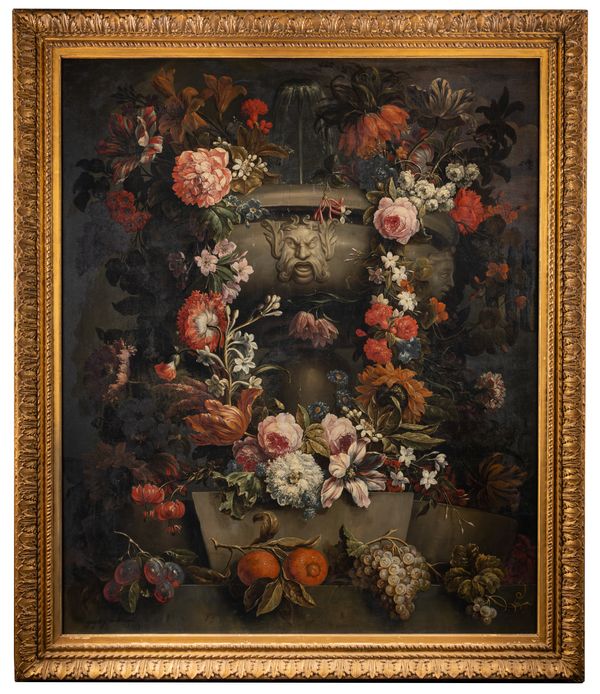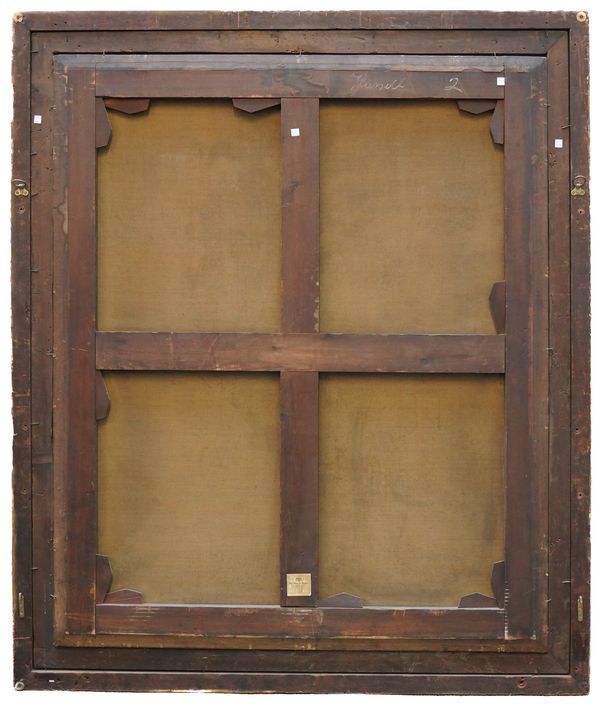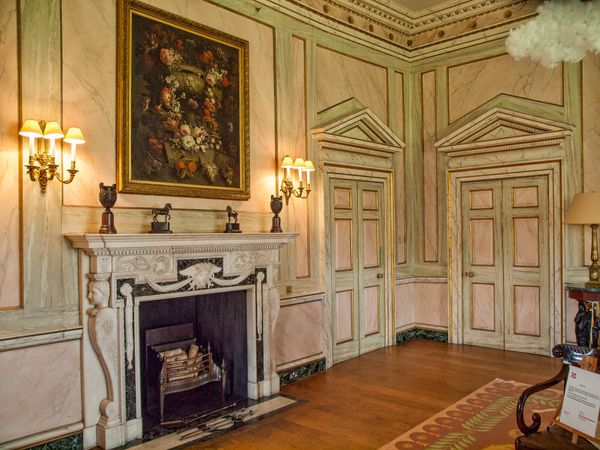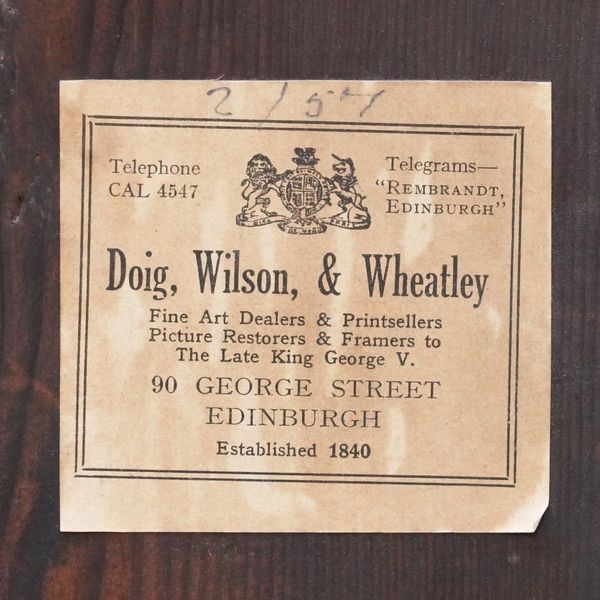GASPAR PEETER VERBRUGGEN THE YOUNGER (FLEMISH, 1664-1730)
Still life with tulips, roses, crown imperials, nasturtiums, peonies, lilies, oranges and grapes around a fountain
signed 'Gasper. P. Verbruggen.f.' (lower left)
oil on canvas
138 x 115cm
We are grateful to Dr. Fred Meijer of the RKD, The Hague, who has confirmed the attribution to Gaspar Pieter Verbruggen II, on the basis of photographs, and dates this picture to the 1690s.
| Estimate: | £12,000 - £18,000 |
Provenance
With Doig, Wilson & Wheatley, Edinburgh;
Thought to have been acquired from the above by the grandfather of the present owner;
Thence by descent
Exhibited
Mottisfont Abbey, Hampshire, circa 2005-2025
Footnote
On an impressive scale, the present work depicts a profusion of flowers surrounding a flowing fountain carved with a satyr. Exuberantly rendered, but with a meticulous attention to horticultural detail, the flowers represent different seasons of the year, with tulips and crown imperials from spring, through to roses and peonies from high summer and lilies and fruit from early autumn. The present work hung for the last couple of decades at Mottisfont Abbey near Romsey and comes to market for the first time since being acquired by the grandparents of the present owner from Doig, Wilson and Wheatley in the early 20th century.
Gaspar Peeter Verbruggen the Younger was born in
Antwerp, the son of Gaspar Peeter Verbruggen the Elder and his first wife
Catharina van Everdonck. Verbruggen the Elder was a successful artist, painting the same subject in similar style, and
trained his son from an early age.
Verbruggen the Younger enjoyed early success becoming a master of the
Guild of St. Luke. He collaborated with
various prominent artists of the age including figure painter Peter Ykens
(1648-1695) and Jacob Leyssens (1661-1710) and taught his half-brother,
Balthasar Hyacinth Verbruggen. In June
1700 he married Dymphna van der Voort but he was widowed only two years
later. Despite his success he fell into
debt and sold his house along with numerous paintings in 1703. Relocating to The Hague in 1705 he recovered
financially for a brief period before running up further debts and returning to
Antwerp where he remained until his death.




